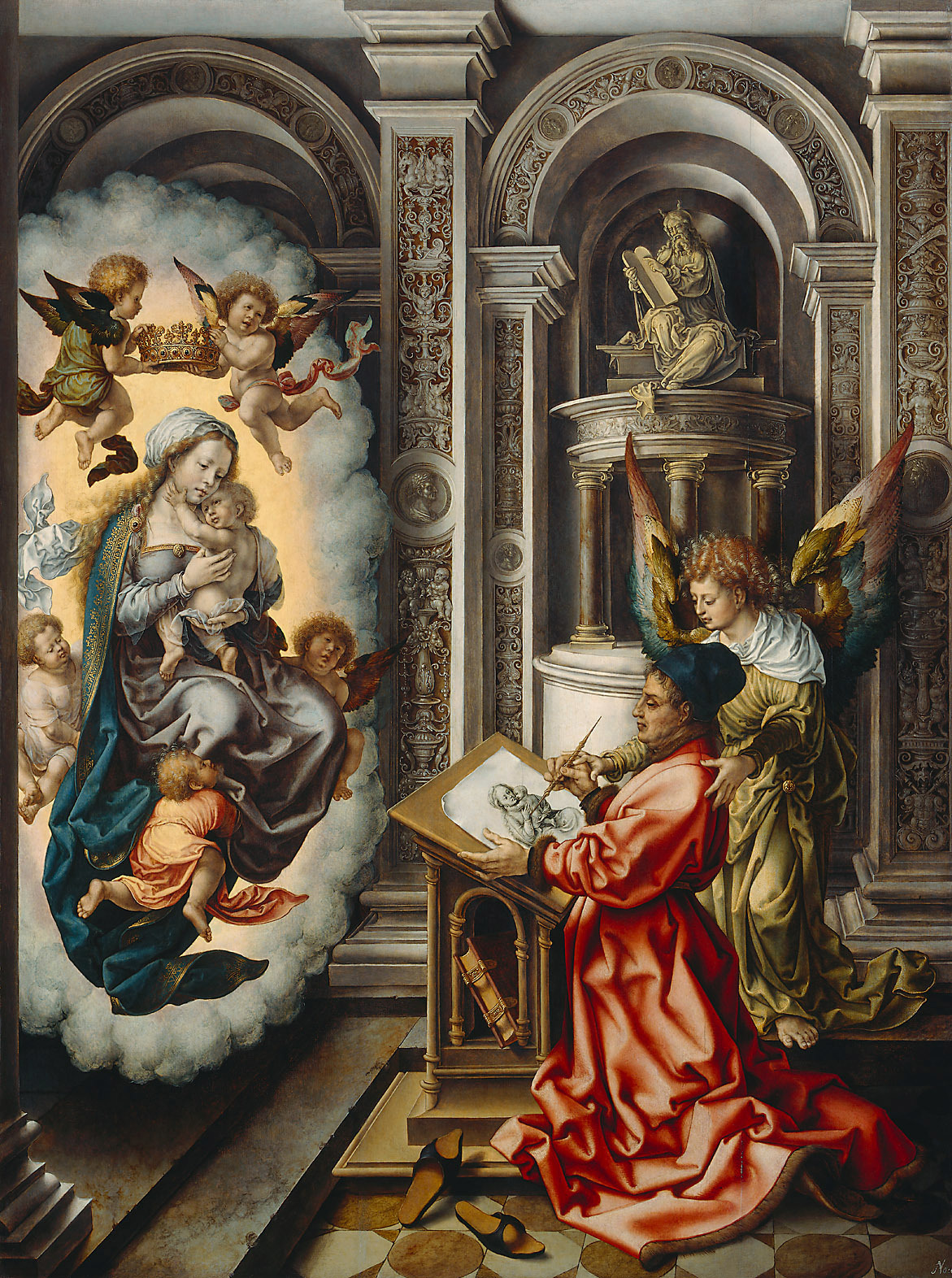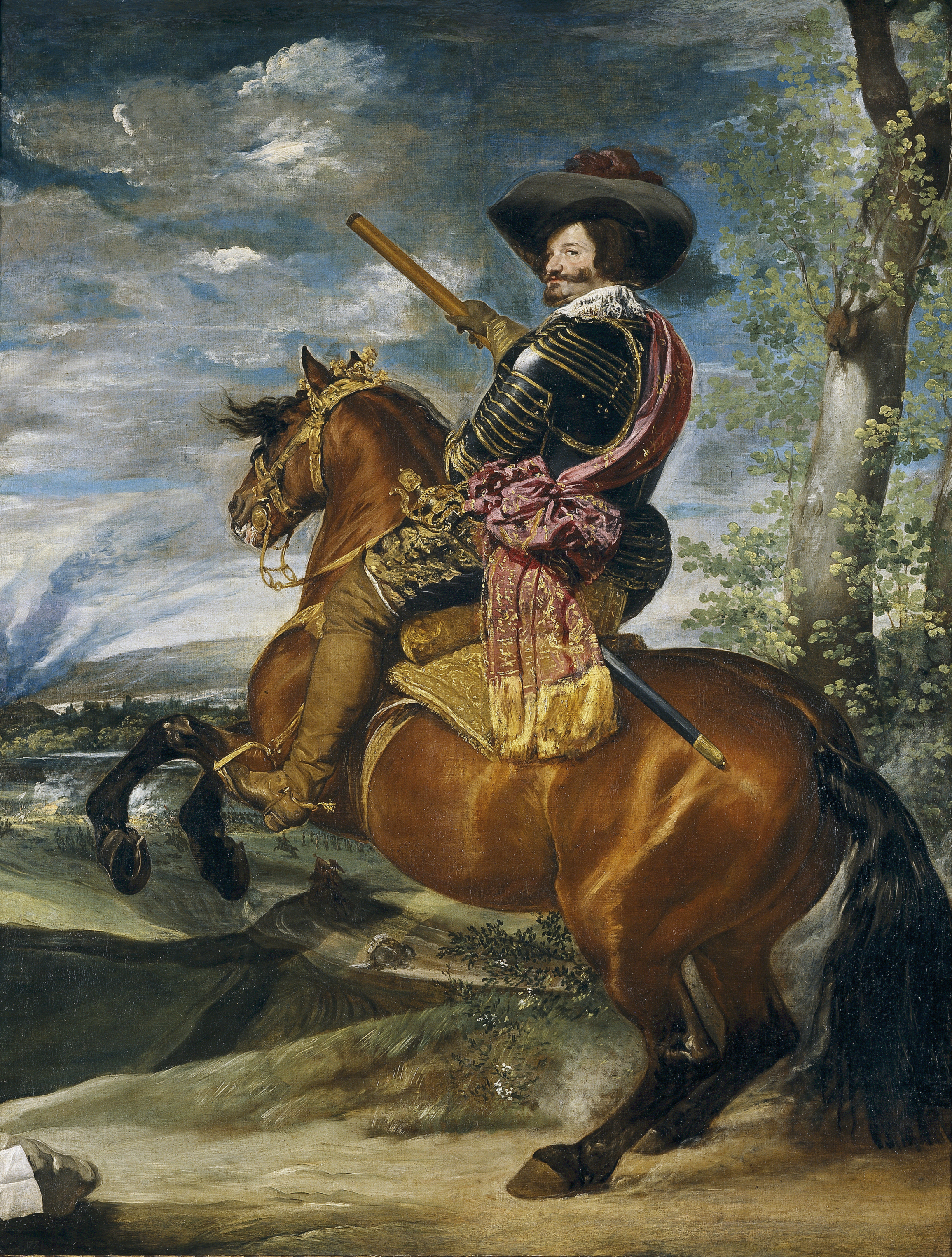|
Adriaen Van Utrecht
Adriaen van Utrecht (Antwerp, 12 January 1599 – 1652) was a Flemish painter known mainly for his sumptuous banquet still lifes, game and fruit still lifes, fruit garlands, market and kitchen scenes and depictions of live poultry in farmyards. His paintings, especially the hunting and game pieces, show the influence of Frans Snyders. The two artists are considered the main inventors of the genre of the pronkstillevens, i.e. still lifes that emphasized abundance by depicting a diversity of objects, fruits, flowers and dead game, often together with living people and animals. Van Utrecht also painted a number of flower still lifes. He was a regular collaborator with leading Antwerp painters who had been pupils or assistants of Peter Paul Rubens, such as Jacob Jordaens, David Teniers the Younger, Erasmus Quellinus II, Gerard Seghers, Theodoor Rombouts, Abraham van Diepenbeeck and Thomas Willeboirts Bosschaert. Life Adriaen van Utrecht was born in Antwerp as the son of Abel ... [...More Info...] [...Related Items...] OR: [Wikipedia] [Google] [Baidu] |
Guild Of Saint Luke
The Guild of Saint Luke was the most common name for a city guild for painters and other artists in early modern Europe, especially in the Low Countries. They were named in honor of the Evangelist Luke, the patron saint of artists, who was identified by John of Damascus as having painted the Virgin's portrait. One of the most famous such organizations was founded in Antwerp. It continued to function until 1795, although by then it had lost its monopoly and therefore most of its power. In most cities, including Antwerp, the local government had given the Guild the power to regulate defined types of trade within the city. Guild membership, as a master, was therefore required for an artist to take on apprentices or to sell paintings to the public. Similar rules existed in Delft, where only members could sell paintings in the city or have a shop. The early guilds in Antwerp and Bruges, setting a model that would be followed in other cities, even had their own showroom or market s ... [...More Info...] [...Related Items...] OR: [Wikipedia] [Google] [Baidu] |
Joachim Beuckelaer
Joachim Beuckelaer (c. 1533 – c. 1570/4) was a Flemish painter specialising in market and kitchen scenes with elaborate displays of food and household equipment.Joachim Beuckelaer at the Netherlands Institute for Art History His development of the genre of market and kitchen scenes was influential on the development of still life art in Northern Europe as well as Italy and Spain.''The Collector's Cabinet: Flemish Paintings from New England Private Collections'', Univ of Massachusetts Press, 1983, pp. 16–19Norman Bryson, Looking at the Overlooked: Four Essays on Still Life Painting, Reaktion Books, London, 2013, p. 146 He also painted still lifes with no figures in the central scene. He further added the staffage (i.e. the figures) or the garments in works of other local painters, such as Anthonis Mor.< ... [...More Info...] [...Related Items...] OR: [Wikipedia] [Google] [Baidu] |
Pieter Aertsen
Pieter Aertsen (1508, Amsterdam – 2 June 1575, Amsterdam), called ''Lange Piet'' ("Tall Pete") because of his height, was a Dutch painter in the style of Northern Mannerism. He is credited with the invention of the monumental genre scene, which combines still life and genre painting and often also includes a biblical scene in the background. He was active in his native city Amsterdam but also worked for a long period in Antwerp, then the centre of artistic life in the Netherlands. His genre scenes were influential on later Flemish Baroque painting, Dutch still life painting and also in Italy. His peasant scenes preceded by a few years the much better-known paintings produced in Antwerp by Pieter Bruegel the Elder. Career Aertsen was born in Amsterdam, and was apprenticed to Aertgen van Leyden, Allaert Claesz. He later travelled to the Southern Netherlands and took up residence in Antwerp, first with his compatriot Jan Mandijn. Aertsen became a member of Antwerp's Guild of Sa ... [...More Info...] [...Related Items...] OR: [Wikipedia] [Google] [Baidu] |
Ashmolean
The Ashmolean Museum of Art and Archaeology () on Beaumont Street in Oxford, England, is Britain's first public museum. Its first building was erected in 1678–1683 to house the cabinet of curiosities that Elias Ashmole gave to the University of Oxford in 1677. It is also the world's second university museum, after the establishment of the Kunstmuseum Basel in 1661 by the University of Basel. The present building was built between 1841 and 1845. The museum reopened in 2009 after a major redevelopment, and in November 2011, new galleries focusing on Egypt and Nubia were unveiled. In May 2016, the museum redisplayed galleries of 19th-century art. History Broad Street The museum opened on 24 May 1683, with naturalist Robert Plot as the first keeper. The building on Broad Street (later known as the Old Ashmolean) is sometimes attributed to Sir Christopher Wren or Thomas Wood. Elias Ashmole had acquired the collection from the gardeners, travellers, and collectors John Tra ... [...More Info...] [...Related Items...] OR: [Wikipedia] [Google] [Baidu] |
Caravaggio
Michelangelo Merisi da Caravaggio (also Michele Angelo Merigi or Amerighi da Caravaggio; 29 September 1571 – 18 July 1610), known mononymously as Caravaggio, was an Italian painter active in Rome for most of his artistic life. During the final four years of his life, he moved between Kingdom of Naples, Naples, Hospitaller Malta, Malta, and Kingdom of Sicily, Sicily. His paintings have been characterized by art critics as combining a realistic observation of the human state, both physical and emotional, with a dramatic use of lighting, which had a formative influence on Baroque painting. Caravaggio employed close physical observation with a dramatic use of chiaroscuro that came to be known as tenebrism. He made the technique a dominant stylistic element, transfixing subjects in bright shafts of light and darkening shadows. Caravaggio vividly expressed crucial moments and scenes, often featuring violent struggles, torture, and death. He worked rapidly with live models, preferrin ... [...More Info...] [...Related Items...] OR: [Wikipedia] [Google] [Baidu] |
Grove Art Online
''Grove Art Online'' is the online edition of ''The Dictionary of Art'', often referred to as the ''Grove Dictionary of Art'', and part of Oxford Art Online, an internet gateway to online art reference publications of Oxford University Press, which also includes the online version of the ''Benezit Dictionary of Artists''. It is a large encyclopedia of art, previously a 34-volume printed encyclopedia first published by Grove in 1996 in art, 1996 and reprinted with minor corrections in 1998. A new edition was published in 2003 by Oxford University Press. Scope Written by 6,700 experts from around the world, its 32,600 pages cover over 45,000 topics about art, artists, art critics, art collectors, or anything else connected to the world of art. According to ''The New York Times Book Review'' it is the "most ambitious art-publishing venture of the late 20th century". Almost half the content covers non-Western subjects, and contributors hail from 120 countries. Topics range from Jul ... [...More Info...] [...Related Items...] OR: [Wikipedia] [Google] [Baidu] |
Chiaroscuro
In art, chiaroscuro ( , ; ) is the use of strong contrasts between light and dark, usually bold contrasts affecting a whole composition. It is also a technical term used by artists and art historians for the use of contrasts of light to achieve a sense of volume in modelling three-dimensional objects and figures. Similar effects in cinema, and black and white and low-key photography, are also called chiaroscuro. Taken to its extreme, the use of shadow and contrast to focus strongly on the subject of a painting is called tenebrism. Further specialized uses of the term include chiaroscuro woodcut for colour woodcuts printed with different blocks, each using a different coloured ink; and chiaroscuro for drawings on coloured paper in a dark medium with white highlighting. Chiaroscuro originated in the Renaissance period but is most notably associated with Baroque art. Chiaroscuro is one of the canonical painting modes of the Renaissance (alongside cangiante, sfumato and uni ... [...More Info...] [...Related Items...] OR: [Wikipedia] [Google] [Baidu] |
Adriaen Van Utrecht - Fruit Still Life
Adriaen is a Dutch form of Adrian. Notable people with the name include: *Adriaen Banckert (1615–1684), Dutch admiral *Adriaen Block (1567–1627), Dutch private trader and navigator *Adriaen Brouwer (1605–1638), Flemish genre painter *Adriaen de Vries (1556–1626), Northern Mannerist sculptor born in the Netherlands *Adriaen Hanneman (1603–1671), seventeenth-century Dutch painter *Adriaen Isenbrandt (1480–1551), Flemish Northern Renaissance painter *Adriaen Maertensz Block (1582–1661), successively captain, commander, and governor of the Ambon Island *Adriaen van Bergen devised the plot to recapture the city of Breda from the Spanish during the Eighty Years' War *Adriaen van de Velde (1636–1672), Dutch animal and landscape painter *Adriaen van de Venne (1589–1662), versatile Dutch Baroque painter *Adriaen van der Cabel (1631–1705), Dutch painter of the Dutch school *Adriaen van der Donck (1618–1655), lawyer and landowner in New Netherland *Adriaen van der Werff (1 ... [...More Info...] [...Related Items...] OR: [Wikipedia] [Google] [Baidu] |
Philip Gyselaer
Philip Gyselaer, also Giselaer (''c''. 1620 – after 1650), was a Flemish painter specialized in history painting in the tradition of Willem van Herp. He was registered at the Antwerp Guild of St. Luke as a pupil of Adriaen van Utrecht in 1634.Philip Gyselaer at the Netherlands Institute for Art History Only a few of his works are known. One of his works depicting ''Mercury and Jupiter in the House of Philemon and Baucis'' is in the collection of the Kunsthistorisches Museum. at the Kunsthistorisches Museum Sources *J. de Maere, Jennifer A. Martin, and Marie Wabb ...[...More Info...] [...Related Items...] OR: [Wikipedia] [Google] [Baidu] |
Philip IV Of Spain
Philip IV (, ; 8 April 160517 September 1665), also called the Planet King (Spanish: ''Rey Planeta''), was King of Spain from 1621 to his death and (as Philip III) King of Portugal from 1621 to 1640. Philip is remembered for his patronage of the arts, including such artists as Diego Velázquez, and his rule over Habsburg Spain, Spain during the Thirty Years' War. By the time of his death, the Spanish Empire had reached approximately 12.2 million square kilometres (4.7 million square miles) in area but in other aspects was in Decline of Spain, decline, a process to which Philip contributed with his inability to achieve successful domestic and military reform. He was succeeded on his death by his young son Charles II of Spain, Charles II as King of Spain and in 1640 (with the collapse of the Iberian Union) by John IV of Portugal, John IV as King of Portugal. Personal life Philip IV was born in the Royal Palace of Valladolid, and was the eldest son of Philip III of Spai ... [...More Info...] [...Related Items...] OR: [Wikipedia] [Google] [Baidu] |
Willem Van Nieulandt II
Guilliam or Willem van Nieulandt or van Nieuwelandt (1582/84–1635) was a Flemish painter, engraver, poet and playwright from Antwerp. He spent two thirds of his career in the Habsburg Netherlands and the remainder in Italy and the Dutch Republic.Eric Jan Sluijter, Career choices of migrant artists between Amsterdam and Antwerp. The Van Nieulandt brothers De Zeventiende Eeuw 31 (2015) 1, pp. 101-137 He is known for his Italianate landscape paintings and prints, often real views or capricci of landscapes and buildings from in or around Rome enlivened by contemporary figures ... [...More Info...] [...Related Items...] OR: [Wikipedia] [Google] [Baidu] |









